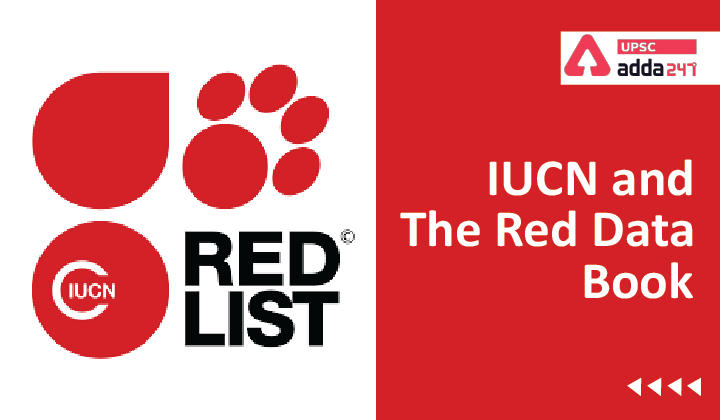Table of Contents
About IUCN
- International Union for Conservation of Nature (IUCN) is a multiparty organization, having members from both the civil society organizations (CSO) and the governments.
- With over 1400 member organizations, IUCN is the global authority on the status of the natural world and the measures needed to safeguard it.
- IUCN is the world’s oldest and largest global environmental organisation.
- IUCN was established in 1948 in the French town of Fontainebleau.
- Its aim was to encourage international cooperation and provide scientific knowledge and tools to guide conservation action.
- During the first decade of its establishment, IUCN’s primary focus was to examine the impact of human activities on nature.
- In this period, IUCN flagged the damaging effects of pesticides on biodiversity, and promoted the use of environmental impact assessments, which have since become the norm across sectors and industries.
- In 1964, IUCN established the IUCN Red List of Threatened Species, which is world’s most comprehensive data source on the global extinction risk of species.
- In 1980, IUCN – in partnership with the UN Environment Programme (UNEP) and the World Wildlife Fund (WWF) – published the World Conservation Strategy, which helped define the concept of ‘sustainable development’ and shaped the global conservation and sustainable development agenda.
- Later in the 2000s, IUCN pioneered ‘nature-based solutions’ – actions to conserve nature which also address global challenges, such as food and water security, climate change and poverty reduction.
Red Data Book: IUCN Red List
- The IUCN Red List of threatened species is a critical indicator of the health of the world’s biodiversity.
- It is a powerful tool to inform and catalyse action for biodiversity conservation and policy change, critical to protecting the natural resources we need to survive.
- It provides information about range, population size, habitat and ecology, threats, and conservation actions that will help inform necessary conservation decisions.
- The IUCN Red List helps to guide and inform future conservation and funding priorities.
- The pink pages in the book contains the critically endangered species.
- Green pages, on the other hand, are used for those species that were formerly endangered but have now recovered to a point where they are no longer threatened.

IUCN Red List Categories and Criteria
- The IUCN Red List Categories and Criteria are a widely understood system for classifying species at high risk of global extinction.
- It divides species into nine categories: Not Evaluated, Data Deficient, Least Concern, Near Threatened, Vulnerable, Endangered, Critically Endangered, Extinct in the Wild and Extinct.
IUCN categories: Extinct
- A taxon is Extinct when there is no reasonable doubt that the last individual has died.
IUCN classification: Extinct in the Wild
- A taxon is Extinct in the Wild when it is known only to survive in cultivation, in captivity or as a naturalized population (or populations) well outside the past range.
IUCN threat categories: Critically Endangered
- A taxon is Critically Endangered when the best available evidence indicates that it meets any of the criteria given by IUCN, and it is therefore considered to be facing an extremely high risk of extinction in the wild.
Criteria
- Population size reduction of ≥90% over the last 10 years or three generations, whichever is the longer.
- Extent of occurrence estimated to be less than 100 km2, or area of occupancy estimated to be less than 10 km2.
- Population size estimated to number fewer than 250 mature individuals, and an estimated continuing decline of at least 25% within three years.
- Population size estimated to number fewer than 50 mature individuals
- Quantitative analysis showing the probability of extinction in the wild is at least 50% within 10 years or three generations.
IUCN categories of threatened species: Endangered
- A taxon is Endangered when the best available evidence indicates that it meets any of the following criteria, and it is therefore considered to be facing a very high risk of extinction in the wild.
Criteria
- population size reduction of ≥70% over the last 10 years or three generations, whichever is the longer.
- Extent of occurrence estimated to be less than 5,000 km2 or area of occupancy estimated to be less than 500 km2.
- Population size estimated to number fewer than 2,500 mature individuals and an estimated continuing decline of at least 20% within five years.
- Population size estimated to number fewer than 250 mature individuals.
- Quantitative analysis showing the probability of extinction in the wild is at least 20% within 20 years or five generations.
Categories in IUCN red list: Vulnerable
- A taxon is Vulnerable when the best available evidence indicates that it meets any of the following criteria, and it is therefore considered to be facing a high risk of extinction in the wild
Criteria
- population size reduction of ≥50% over the last 10 years or three generations.
- Extent of occurrence estimated to be less than 20,000 km2 or area of occupancy estimated to be less than 2,000 km2.
- Population size estimated to number fewer than 10,000 mature individuals and an estimated continuing decline of at least 10% within 10 years.
- Population size estimated to number fewer than 1,000 mature individuals.
- Quantitative analysis showing the probability of extinction in the wild is at least 10% within 100 years.
IUCN different categories: Near threatened
- A taxon is Near Threatened when it has been evaluated against the criteria but does not qualify for Critically Endangered, Endangered or Vulnerable now, but is is likely to qualify for a threatened category in the near future.
IUCN categories: Least Concern
- A taxon is Least Concern when it has been evaluated against the criteria and does not qualify for Critically Endangered, Endangered, Vulnerable or Near Threatened. Widespread and abundant taxa are included in this category
IUCN categories: Data deficient
- A taxon is Data Deficient when there is inadequate information to make a direct, or indirect, assessment of its risk of extinction based on its distribution and/or population status.
IUCN categories: Not evaluated
- A taxon is Not Evaluated when it has not yet been evaluated against the criteria.
FAQ
Q. What is IUCN full form?
Ans. International Union for Conservation of Nature.
Q. Where is IUCN headquarters?
Ans. Gland, Switzerland
Q. When was IUCN established?
Ans. IUCN was established in 1948.
Q. What is the IUCN status of snow leopard?
Ans. The snow leopard is listed as “Vulnerable” on the IUCN Red List of Threatened Species.
Q. How many IUCN threat categories are there?
Ans. There are nine categories in the IUCN Red List.
Also Read:



 TSPSC Group 1 Question Paper 2024, Downl...
TSPSC Group 1 Question Paper 2024, Downl...
 TSPSC Group 1 Answer key 2024 Out, Downl...
TSPSC Group 1 Answer key 2024 Out, Downl...
 Cabinet Ministers of India 2024, New Cab...
Cabinet Ministers of India 2024, New Cab...







